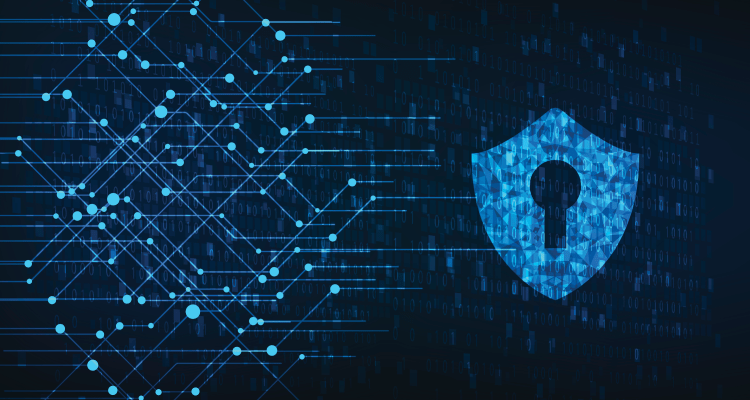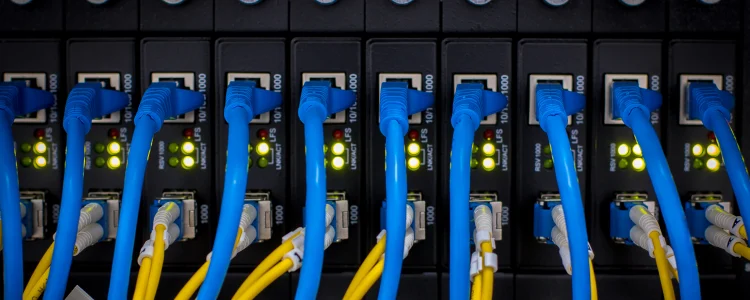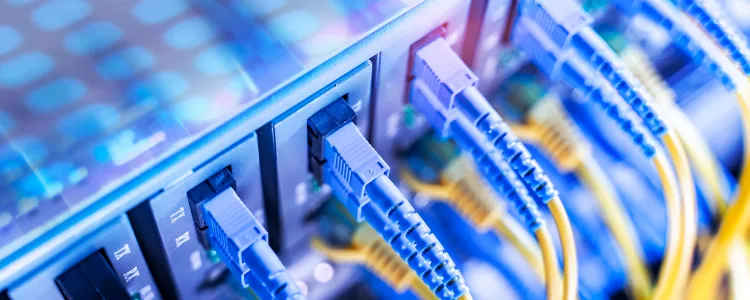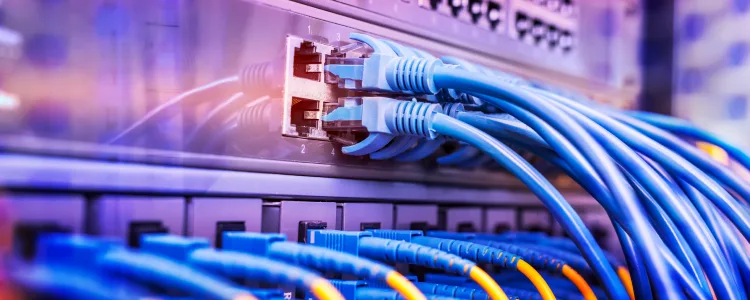Network Switch Security 101: Understanding the Basics

A network switch is a physical or virtual device that connects and communicates between two or more devices, forming a network. It is a fundamental component of a local area network (LAN). Networks connect devices to perform essential business functions, making network security critical to defend against threats. These devices range from LANs to WANs, use various hardware like routers and firewalls, and rely on encryption and monitoring to protect data.
Networking is a vast topic, so let’s break it down into something bite-sized by focusing on network switches. From port security in a network to configuring private switches in server clusters, switches are at the top of everything from dedicated servers to cluster hosting and colocation servers. Operating as Layer 3 of the Open Systems Interconnection (OSI) model, networks manage data transmission by creating and routing packets, often secured through encryption. Diverse network hardware includes servers, routers, switches, and firewalls, each integral to network functionality.
The ‘CIA triad’, a common model that forms the basis for the development of security systems, is used for finding vulnerabilities and methods for creating solutions. ‘CIA’ stands for, confidentiality, integrity, and availability, in security strategies, and for the last 20 years, ServerMania has been a trusted leader in building security solutions, empowering businesses with secure and reliable networks. Our advanced solutions protect against external threats, manage data transmission, and monitor network switch configuration, ensuring your applications run seamlessly and securely across diverse network types, from LANs to cloud-based systems.
Read one of our recent blogs on switch vs router differences.

What is a Network Switch?
Network switches operate at the data link layer (Layer 2) of the OSI model. Examples of devices connected to a network switch include computers, servers, printers, and other networked devices. When linked together, these interconnected assets support core business functions, allowing network managers to place devices on different segments, even if they’re geographically distant, all while staying connected within the same community of workstations, servers, switches, and SaaS gateways.
Understanding Network Switch Security Fundamentals
The network switch is the backbone of your infrastructure, connecting devices, managing data traffic, and ensuring smooth connectivity. But with so many options out there, how do you pick the right one for your business? This variety in networks means there’s no one-size-fits-all solution for security, so it’s important to know what you’re working with. This guide is here to help, offering key insights and tips to make sure you choose the right network switch.
Before diving into the details, let’s start with the basics. Networks come in all shapes and sizes, and the security you need depends on the type of network you’re working with.
Here’s a quick breakdown:
- LAN (Local Area Network): Think of LANs as small, localized networks—like your home or office intranet. They connect a bunch of devices like computers, smartphones, printers, and even gaming consoles through one or more routers. These routers manage all the traffic and assign IP addresses to each device, making sure everything stays connected.
- WAN (Wide Area Network): WANs are more widespread, literally. They connect multiple LANs over large distances, like how a company with offices in different cities keeps everything linked up. The internet itself is a giant WAN, as is your ISP’s network.
- SD-WAN (Software-Defined WAN): SD-WAN is like an upgrade to your standard WAN. It’s a software layer that sits on top of your WAN, giving you more control over traffic and access to resources. It’s convenient for securing cloud-based assets and allows for detailed traffic monitoring, making it a go-to for businesses looking to tighten up their network security.

How Do Network Switches Work?
Network switches operate by intelligently forwarding Ethernet frames based on MAC addresses. This process increases network efficiency, reduces collisions, and enables devices to communicate effectively within a local network. Network switches work by examining the destination MAC address of each frame and forwarding it to the corresponding device. This process is repeated for each frame received by the switch; but there are common security checks to look out for. These threats could bring down your infrastructure very quickly.
Consider partnering with a colocation provider you can trust.

Common Security Concerns and Threats
MAC Addresses Flooding
MAC address flooding occurs when an attacker floods the switch with numerous fake MAC addresses, overwhelming the switch’s MAC address table. DHCP spoofing involves an attacker pretending to be an authorized DHCP server, distributing incorrect or malicious IP configurations to devices. VLAN hopping is a method used by attackers to access different VLANs on a switch.
This can lead to a scenario where the switch enters a fail-open mode, allowing all traffic to pass through without proper MAC address validation. Implementing port security measures, such as limiting the number of MAC addresses per port, can mitigate MAC address flooding attacks.
Phishing
Phishing tops the list at 80%, surpassing misconfigurations, and it’s no surprise. These attacks often slip through spam filters, making it tough to shield users from them entirely. What makes phishing even trickier is how realistic and convincing these schemes have become, especially with targeted spear phishing that’s tailored for specific individuals or groups.
Phishing simulations are a great way to test the waters. They mimic real phishing attacks, allowing companies to track whether users open, click, or even enter credentials. This helps pinpoint which employees are more vulnerable and what types of phishing tactics they fall for. From there, regular training can help sharpen their awareness and make them more cautious.
Ransomware
Ransomware has exploded as a major threat, dominating headlines with high-profile breaches and ransom demands. At its core, ransomware is a type of malware that locks down data and demands payment to release it. Ransomware now makes up 10% of all data breaches, having doubled in just a year, and over a third of organizations worldwide faced a ransomware attack in 2021.
The sophistication of these attacks has also escalated, with some criminals offering ransomware as a service (RaaS), renting out malware platforms for others to use. Paying the ransom doesn’t guarantee you’ll get your data back either—attackers often return for more, threatening to sell or leak sensitive info if their demands aren’t met.
Misconfigurations
Misconfigurations, especially in the cloud, have been responsible for several major data breaches. Even when security settings are correct at first, they can be changed—intentionally or accidentally—by employees later on. Thankfully, there are steps you can take to minimize these risks.
- Limit access: Only give employees the permissions they need to do their jobs. This prevents them from unintentionally accessing and changing settings they shouldn’t be touching. Implementing Identity Access Management (IAM) solutions can help enforce this.
- Monitor and manage configurations: Misconfigurations often go unnoticed for long periods, only discovered after a breach. Regularly check your network and server settings to ensure they comply with security policies. Automating this process with tools like SIEM can help catch unauthorized changes before they cause harm.
Weak Passwords
Weak passwords continue to be a major security risk. It’s crucial to have a strong password management system in place that enforces complexity and non-reuse rules. Flexible authentication methods—like mobile or voice-based resets—can also boost adoption rates and keep password resets secure.
Lack of Patching
For the first time, poor patch management has emerged as a top security threat. Hackers are quick to reverse-engineer new patches and exploit unpatched vulnerabilities. To stay ahead, companies need to create an asset inventory, monitor patches, and apply them immediately. Automated penetration testing tools can help verify that vulnerabilities have been properly patched.
Lost or Stolen Devices
With the rise of remote work, the risk of lost or stolen devices has skyrocketed. While you can’t prevent every incident, having a policy in place that encourages employees to report lost devices quickly is key. Security monitoring tools can also detect suspicious activity, like repeated login attempts or sessions from unusual locations, helping to flag stolen devices before they cause damage.

Advanced Switch Security Features
Network Access Control
Implement network access control measures, including secure authentication methods and limiting administrative access to trusted individuals. Configure access ports to restrict unauthorized access to the network. Use VLANs to provide segmentation within the network and isolate different groups of devices.
IEEE 802.1x
IEEE 802.1x is a port-based authentication protocol that provides more robust port security than simply turning off unused ports 802.1x requires users or devices to authenticate when they connect to the switch or a specific physical port. It can be implemented in both wired and wireless networks and secures the authentication process prior to a client gaining access to a network.
VLAN Hopping Protection
VLAN hopping is a method used by attackers to access different VLANs on a switch. Disable automated trunk negotiation (DTP) on switches that do not need to trunk and determine whether each interface on a switch is an access port or a trunked port. Implement VLAN hopping protection to prevent attackers from accessing different VLANs on a switch.
Unicast Flood Protection
Unicast flood protection allows administrators to set a limit on the number of unicast floods on a switch. When flood protection detects unknown unicast floods exceeding the predefined limit, it sends an alert and shuts down the port that is generating the floods. This feature prevents attackers from flooding the switch with spoofed MAC addresses.
Switch Security Best Practices
Regularly Update Firmware and Software
Switch manufacturers are always rolling out updates and patches to fix security issues and improve performance. It’s crucial to keep your customers’ switch firmware and software up to date to protect against known vulnerabilities. Set up a regular update routine and make sure you’re applying security patches as soon as they’re available. Staying proactive with updates goes a long way in reducing the risk of attacks on outdated systems.
Harden Switch Configurations
To secure LAN switches, start by disabling any unnecessary services, ports, and protocols—this helps reduce the number of ways attackers can get in. Get rid of default settings, restrict remote access, and make sure strong passwords are in place for admin accounts. By following these best practices, you’ll lower the chances of unauthorized access and block common attack methods.
Implement Port Security Features
Implement DHCP snooping to validate DHCP server legitimacy and ensure only authorized servers are utilized. Configure the MAC address table to limit the number of MAC addresses per port. Enable port security features to prevent MAC address spoofing attacks.
Disable Unused Switch Ports
Disable unused physical ports on a switch to prevent attackers from plugging in a computer and accessing the network. This is a basic security measure that can be implemented in the switch console interface—disable unused ports to prevent unauthorized devices from accessing the network.
Secure Remote Access
Secure remote access to switches using SSH or other secure protocols. Limit administrative access to trusted individuals and implement secure authentication methods. Regularly update firmware to keep switch firmware up to date with the latest security patches and bug fixes.
It is imperative to secure this access to prevent unauthorized individuals from compromising the network. One commonly used method for secure remote access is Secure Shell (SSH). SSH operates by encrypting data transmitted between the administrator’s device and the switch, ensuring that sensitive information remains confidential. When implementing SSH, organizations can establish a secure channel for remote management, minimizing the risk of data interception or unauthorized access to ports.
Monitor Network Traffic Regularly
Keeping a close eye on network traffic is crucial for spotting suspicious behavior early and acting fast. Use network monitoring tools and intrusion detection systems (IDS) to track traffic patterns and catch anything out of the ordinary. Real-time monitoring ensures you can respond quickly to security incidents, minimizing potential damage.
Access Control Lists (ACLs)
Access Control Lists (ACLs) are powerful tools for controlling traffic and boosting security on LAN switches. They allow admins to set rules for permitting or blocking traffic based on things like IP addresses, ports, and protocols. By using ACLs, security contractors can reduce exposure to threats and shrink the attack surface on customer networks.
Network Access Control (NAC)
Network Access Control (NAC) adds another layer of defense by checking the health and compliance of devices before they connect to the network. NAC systems ensure devices have things like updated antivirus software and patched operating systems before granting access, helping keep vulnerable or compromised devices out of your network.
Conclusion – Key Takeaways
Implementing strong switch security is crucial to protect networks from unauthorized access and potential attacks. Enable port security features, implement port security, and configure DHCP snooping to validate DHCP server legitimacy. Use VLANs to provide segmentation within the network and isolate different groups of devices. Regularly update firmware and monitor network traffic to detect and analyze suspicious or malicious activities.
Securing LAN switches is key to a solid network defense. By following this guide, businesses can lower the risk of cyberattacks and protect sensitive data and critical infrastructure. We understand the risk organizations sometimes take with low standard infrastructure which is why we have developed advanced solutions that protect against external threats, manage data transmission, and monitor network switch configuration, ensuring your applications run seamlessly and securely across diverse network types, from LANs to cloud-based systems.
Book a free consultation with to us today and let us help you secure your infrastructure.
Was this page helpful?

